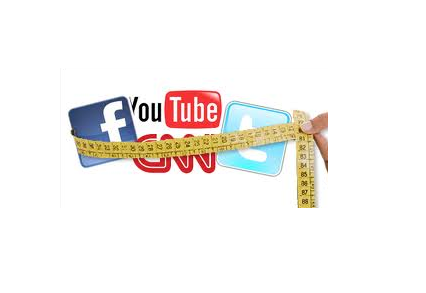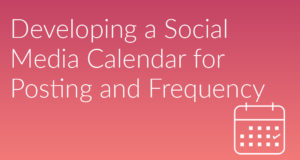The only question more important than whether to capitalize the “I” in “Internet” is how, as a blogger, webmaster or business owner, you can expand your readership or customer base. The good news is that there are a number of tools at your disposal to make sense of the many hundreds of variables floating around out there. Here’s a look at five of them.
Unique Visitor Count
This is your bread and butter. Using unique visitor count as a social media metric is a bit of a blunt instrument, but it really does provide a solid baseline for measuring your success going forward. If you represent a relatively younger website or business, then the early days are going to be a race for a higher unique visitor count; in other words, you can’t start worrying about “going viral” until you have a solid, steady, and consistent number of unique visitors.
It’s easy enough to measure, but don’t get too caught up in it. As we’ll discuss below, sheer numbers aren’t the best indication of the success of your marketing strategy.
Subscriber Count
If unique visitor count is the simplest metric that serves as a benchmark for all others, then subscriber count logically comes next. While unique visitor count is a good way to get a handle on how many people are visiting, and where they’re coming from, subscriber count is a much better way to gauge public interest.
Keeping track of visits are one thing, but if they’re not subscribing, it means they’re not sticking around to learn more. It’s like following the mantras of the Charleston group and focusing on individuals – one by one. Don’t try appealing to the masses right off the bat. Start slow and work your way up.
Quite simply, subscriber count is the number of people who (for example) choose to follow you on Twitter, subscribe to your newsletter, or Like your Facebook page. It indicates that they want to stay in-the-loop with your company and receive updates in the future. More than the number of clicks, it represents, to a certain extent, how passionate your customers are about what they see on your site or page.
Comment Count
This one is really important, and one of the metrics that are potentially a great deal more important than your sheer number of visitors or even subscribers. According to NM Insight, more customers in 2013 used social media to speak directly to the companies they follow than in any previous year. This seems to represent a widespread shifting of how companies and customers interact.
Referring to this metric as “comment count” really doesn’t effectively stress the variety of interaction going on. Customers are now using social media to ask questions, provide feedback, and generally feel connected to the brands they like. Tools like Social Inbox can give you a top-down view of your customers and help you to get an idea not only of who’s bothered to comment, but what they’re talking about. You’ll be able to identify popular topics of conversation, as well as what topics aren’t getting enough attention.
Share Count
Let’s stress it again: when you’re playing the numbers game, it might seem like sheer numbers of subscribers is what’s important. Much more important is what your audience is doing with your content.
To put it another way, seeing a month-to-month increase in subscriber count isn’t enough; you want to know that they’re sharing your company’s content. Word of mouth is hugely important to a growing business, and this is the closest you’ll be able to come to measuring it accurately.
Speaking of measuring, Facebook’s EdgeRank algorithm has been hugely helpful for companies to get a handle on how effectively their customers have been sharing their content.
ROI
Last but not least we have ROI, or return on investment. Tech giant Adobe is familiar with the importance of ROI, yet claims that more than 50% of marketers struggle with accurately measuring their ROI.
The short version is that ROI measures how many people become new customers as a result of your social media marketing campaigns. As a result, it’s a direct measurement of the effectiveness of your marketing techniques. To properly measure ROI, you’ll want to use a contact database to interpret your marketing analytics. A business like Maxwell Systems needs to see ROI on their social media campaigns, while a casual blogger might be more concerned with increasing their subscriber count.
It’s all about setting priorities.
Over time you’ll be able to see exactly how social media has contributed to the success of your marketing strategy, as well as to make predictions for the future.
There are obviously going to be some nuances and lots more things to learn as time goes on as we learn to better measure audience engagement. These are the broad-strokes, though, and they should be useful for getting a better idea of whether your time and effort is being used wisely.
 Written by Jesse Aaron. Jesse is a professional blogger with a passion for homebrewing.
Written by Jesse Aaron. Jesse is a professional blogger with a passion for homebrewing.
 Social Media Data Insights & Resources for Social Media
Social Media Data Insights & Resources for Social Media




